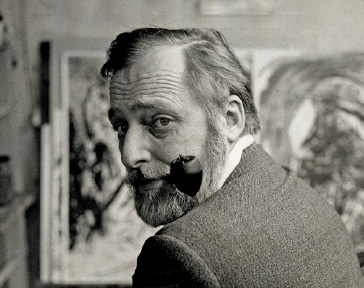VIZUĀLO MĀKSLU PORTĀLS
|
|
|
Kur iegādāties? Iegādāties iepriekšējos Nr. Par mums
| Izstāde "Jorn’s Donation" Jorna muzejā Sikleborgā Jacob Thage, director of Museum Jorn, Silkeborg/Denmark 12.06.2010 - 15.08.2010 Museum Jorn is best known for its unique collection of Asger Jorn’s own works, and since the museum’s reopening in March this year the full collection has been on display. But Jorn had his own ideas for the museum that he created in the years 1953 -1973. He wanted it to reflect the idioms of other artists with which his own art shared affinities. Such idioms are exemplified, for instance, by the Cobra group and by the collection of some 3500 works that made up his generous donation to the museum. | ||||||||||
 Portrait of Asger Jorn. Photo: Egon Engmann | ||||||||||
| Jorn made no secret of the fact that the collection has a highly personal edge: not selected on the basis of traditional art-historical criteria, it is biased towards ‘spontaneous-abstract’ art and works that he rated highly. It is worth remembering that he acquired each individual piece personally. The result is impressive, and frequently surprises by its singular mix of significant works by some of the twentieth century’s leading artists and intimate works by both well known and lesser-known artists. Jorn’s collection takes off from the eighteenth century Danish artist N.A.Abildgaard and indeed, from an even earlier figure, the seventeenth century Dutch artist Teniers. It includes representatives of nineteenth century Scandinavian art and fin-de-siècle Symbolist art, featuring works by Johannes Holbek, Odilon Redon and James Ensor. The Germans Emil Nolde and Otto Dix are just two representatives of expressionism, while Surrealism, of which Jorn considered his own art to be an offshoot, is represented by such names as Max Ernst, Man Ray, Picabia and the Danes Vilhelm Freddie and Bjerke-Petersen. Jorn’s donation also encompasses members of the groups of which he himself was a member over the years, such as the 1940s Høst group and not least Cobra. Indeed, the collection holds fine pieces by Cobra’s Dutch, Belgian and Danish members. The constellation of artists who congregated in Albisola in Northern Italy, where Jorn lived for a number of years, includes such names as Fontana and Matta, and not least his friend Pinot Gallizio. Via his dealer van de Loo in Munich Jorn also came into contact with Gruppe Spur, and the exhibition features works by Lothar Fischer, Heimrad Prem and H.P. Zimmer, among others. In addition, Jorn was interested in oriental art, and both contemporary Japanese artists and a choice collection of dragons figure in the collection. Lastly, some of the most celebrated names of the twentieth century are likewise represented. Jean Dubuffet is one, alongside artists who pushed the boundaries of painting, such as Wols, Sam Francis and Jackson Pollock. With this exhibition, the museum demonstrates a breadth and a depth which, for reasons of space, is not displayed on a daily basis. For this display, the whole of the museum’s exhibition wing has been commandeered, while the studio wing remains dedicated to Jorn’s oeuvre in its entirety. The exhibition, one of a series aimed at bringing Jorn’s art and collection into sharp focus, comprises some 300 works. Jorn himself said: “Exhibits are mementos. These items are personal mementos from my own time. Time will show whether they are something other and more than mementos.” Opening hours: Tuesday – Sunday 10 – 17. Monday closed. | ||||||||||
| Atgriezties | ||||||||||
| ||||||||||








